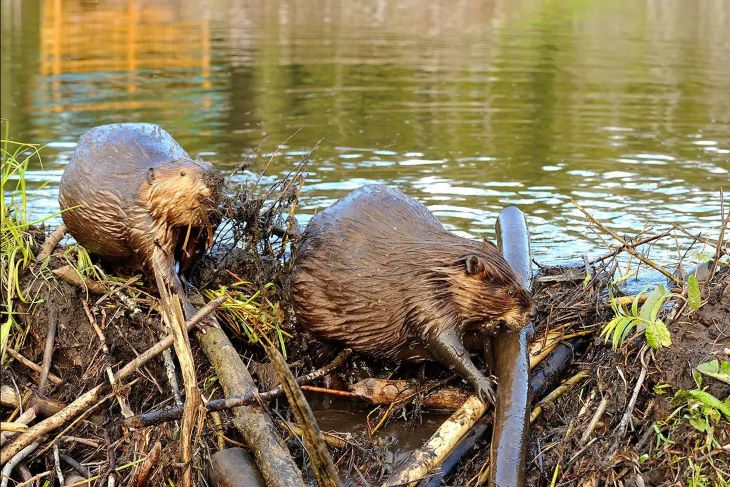
When people talk about animal laves, they don’t really mention beavers. This humble creature actually does a lot for the environment and could in fact be the key to saving the planet’s water. This was according to a new research. It saw how their dam building skills had protected rivers that were under threat by climate change.
If rivers are at a risk of drying up, the beavers naturally tend to build dams under in order to aid and sustain the water flow and quality. In fact, the research was conducted on rivers in Colorado. They saw how these wooden barriers were able to elevate the water levels upstream. When the dam builds up the water, this is then distributed into surrounding soils and secondary waterways.
The soils and waterways are also called riparian zones that are like filters that strain the excess nutrients and contaminants before the water from these bodies of water are redirected into the main channel found downstream.
Then, the world has to endure extreme weather events as well. They have to deal with rapid snowmelt and severe storms, all of which will have an effect on the quality of water found in major river systems. In fact, either droughts and floods happen, and in reality, these are taking place more frequently. The researchers have also noticed that these contribute to an uptake of the American beaver in the US, and as a result, there was an explosion of dam building as well.
“As we’re getting drier and warmer in the mountain watersheds in the American West, that should lead to water quality degradation,” said Professor Scott Fendorf. He is from Stanford University, California and is also the study’s main author. “Yet unbeknownst to us prior to this study, the outsized influence of beaver activity on water quality is a positive counter to climate change.”
The team went on to monitor a 40 kilometer stretch of East River, near Crested Butte in central Colorado. They studied the data they took on water levels that were gathered each hour with the help of the sensors installed in the river and all throughout the riparian area. Furthermore, they also collected water samples. The samples also came from below the ground’s surface so that they can study water nutrient and contaminant levels.
The team then compared water quality that was found along a stretch of a historically dry year. They placed this side by side with the water quality the following year when the levels of the water had been higher than usual.
They looked into the datasets that were a year’s worth to collect to water quality during the almost 3-month period that began late July 2018, a time when the dam built by the beaver blocked the river.
The study revealed the dams made helped increase the nitrate removal by almost 50 percent because the dam was also able to increase the pressure of the water flow upstream 10 times more. This meant that there was more water diverted towards the riparian areas.
This lowering of nitrates, compounds that are absorbed and digested by soil microbes, helped bring up oxygen content and quality for the animal life found in these rivers.
Lead author of the study, Dr. Christian Dewey at Oregon State, comes from a university whose mascot is also a beaver, went on to track seasonal changes in hydrology. “Completely by luck, a beaver decided to build a dam at our study site,” he said. “The construction of this beaver dam afforded us the opportunity to run a great natural experiment.”
The study was a reminder for everyone that when the future impacts of climate change are assessed in a holistic process, the feedback from changes in ecosystems should be considered as well.
“Beavers are countering water quality degradation and improving water quality by producing simulated hydrological extremes that dwarf what the climate is doing,” explained Fendorf. “We would expect climate change to induce hydrological extremes and degradation of water quality during drought periods.”
“In this study, we’re seeing that would have indeed been true if it weren’t for this other ecological change taking place, which is the beavers, their proliferating dams, and their growing populations.”
Beavers instinctively build and their hardworking nature dates back millions of years. In fact, these creatures are responsible for the rich and fertile land in which they live.
What are your thoughts? Please comment below and share this news!
True Activist / Report a typo


